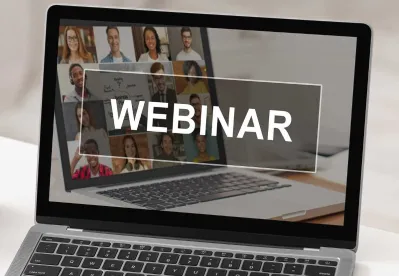Webinars are one of the most effective and inexpensive marketing tactics to generate leads, promote your business and its employees, and increase conversions for professional service organizations.
Once the webinar is over your work is far from over. In fact, that’s where the greatest opportunities are.
Smart marketers find creative ways to extend the life of their webinars and make use of all the valuable content that was generated from it in order to engage with attendees, those who registered who couldn’t make it and others who might be interested in the content who didn’t know about it.
Repurposing webinar content is a great (and smart) way to extend the value and reach of your original content.
By turning your webinars into different formats and sharing them across various channels, you can reach a wider audience and maximize the impact of your content. Here are some best practices for repurposing webinar content:
- Identify valuable segments: Review your webinar recording and identify the most valuable segments that can be turned into separate pieces of content. You can break up the webinar by individual topics, speakers, key insights or actionable tips.
- Create shorter videos: Break down your webinar into shorter video clips. Create concise videos that address specific topics or questions. Short-form videos are easier to consume and share on social media platforms and hold the attention of your audience more than a long full webinar.
- Write blog posts: Convert the key points and insights from your webinar into blog posts. Expand on the topics discussed during the webinar, provide additional context and include relevant visuals or screenshots to make the content more interactive.
- Create infographics: Condense the data, statistics and/or processes shared in your webinar into infographics, which are highly shareable and can be used on social media, in blog posts or as standalone content pieces. You can easily create infographics from various templates in Canva.
- Create slide decks: Transform your webinar presentation into a slide deck format. Remove any confidential or sensitive information from the slides and send to webinar registrants as well as anyone else who might find the content of interest. Slide decks can be shared on platforms like SlideShare and used as visual aids for related blog posts or social media updates.
- Write an e-book or white paper: Compile webinar content into a comprehensive e-book or whitepaper. Add additional research, case studies or examples to provide more value to your audience. Gate this content behind a lead capture form to generate leads for your business.
- Generate podcast episodes: My favorite tip of all when it comes to repurposing webinar content is turning it into podcasts – I bet you didn’t even realize you have a podcast at your fingertips! Extract the audio from your webinar and repurpose it into podcast episodes. Edit the audio to make it suitable for a podcast format, and consider adding an introduction or conclusion to provide context.
- Create social media snippets: Extract key quotes, insightful statements or interesting facts from your webinar and turn them into social media snippets. Create visually appealing graphics with these snippets and share them on your social media channels, directing users back to the full webinar recording or related content.
- Host a live Q&A session: Use the webinar content as a basis for a live Q&A session on social media platforms or via a webinar platform. Engage with your audience, answer their questions and provide additional insights related to the webinar topic.
- Share across channels: Once you have repurposed your webinar content into different formats, share them across various channels such as your website, blog, social media platforms, YouTube, podcast platforms and email newsletters to reach a wider audience and ensures that your content is accessible to different preferences.




 />i
/>i

